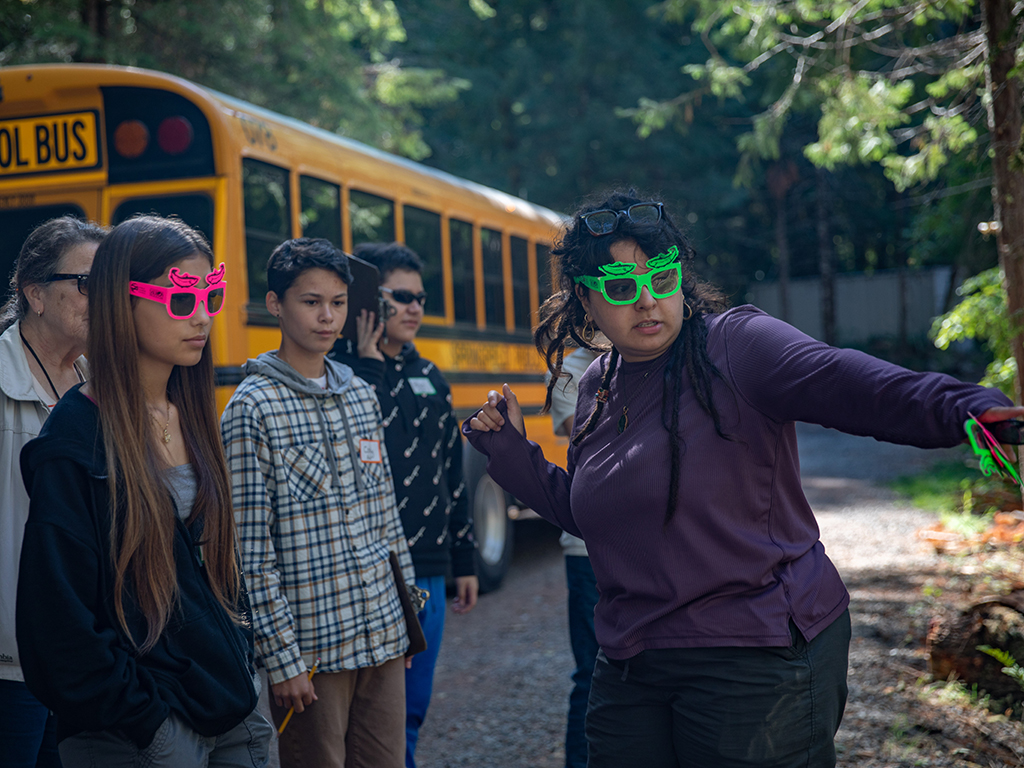Related News
Related News
-
Sustainability Snapshot - Celebrating Energy Efficiency Projects in the Community
Sustainability Snapshops highlight impactful projects completed by EWEB's Customer Solutions department, as a way to celebrate the meaningful work happening behind the scenes.
Find Out More -
McKenzie Valley electric service territory realignment study reaches key milestone
EWEB Commissioners approved a resolution authorizing the General Manager to negotiate and execute agreements with Lane Electric Cooperative regarding a potential realignment of electric service territory in the McKenzie Valley at the Board’s December meeting.
Find Out More -
Women in STEM: Meet the Hydro Project Engineer Building Habitat for Salmon
EWEB Engineer Associate Val Chang found her way to the McKenzie River from Los Angeles, inspired by heritage trips to the waters of Taiwan and key mentors along the way.
Find Out More -
Public Power Week Poster Contest Winners 2025
The results are in! View the winning posters from EWEB's 2025 Public Power Week Poster Contest.
Find Out More -
EWEB Hometown Heroes compete internationally
Out of 290 teams from 14 different countries, EWEB's Lineman Rodeo team places in the top third of competitors.
Find Out More -
EWEB's Halloween Truck-or-Treat is a huge success
Community members are accustomed to spotting EWEB trucks around Eugene streets and neighborhoods. But last week, those familiar vehicles looked a little different. At EWEB's second annual Truck-or-Treat Customer and Crew Appreciation Event, our fleet transformed into a festive Halloween spectacle.
Find Out More -
Let's Talk Turkey. Is your family ready for winter?
We're heading into the holidays, but that also means snow, ice, and not-so-nice weather might be in the forecast. Here are some tips to prepare in advance.
Find Out More -
Vote for your favorite Public Power Week Posters
The top five submittals will receive awards. Help us pick the winners.
Find Out More -
EWEB Hosts Annual Spill Drill to Protect McKenzie River
EWEB led emergency responders in its annual “spill drill” on the McKenzie River on Wednesday, Oct. 15, at the Trail Bridge Campground.
Find Out More -
Electric Projects underway in North & South Eugene
Underground lines and disaster-resilient power poles are part of EWEB’s infrastructure upgrade near Eugene’s largest natural resource area.
Find Out More -
EWEB general manager to retire in 2026
EWEB launches nationwide search for next leader to continue the progress of the last decade and ensure a smooth transition.
Find Out More -
Quartz Creek: Setting the Stage for Floodplain Restoration
The project resets the floodplain along 1.8 miles of a formerly channelized creek to improve water quality, fish habitat and natural disaster resiliency.
Find Out More -
You can’t predict the next disaster, but you can prepare
The earthquake lasted less than a minute. But now the power’s out. The tap runs dry. Cell service is spotty. Would you be ready?
Find Out More -
EWEB completes helicopter installation of salmon habitat features
EWEB adds downed trees and 2,000 tons of gravel to the Uupper McKenzie River below Tamolitch Falls to improve spawning habitat.
Find Out More -
Oregon’s New Utility Laws and How EWEB Customers Already Benefit from Fair, Transparent Rates
Oregon’s POWER Act and FAIR Energy Act target investor-owned utilities. Learn how EWEB’s local, community-owned model already meets these goals.
Find Out More - Show More
Salmon Watch program introduces next generation to their natural heritage on McKenzie River
September 30, 2024 • Adam Spencer, Communications Specialist

As salmon return to spawn throughout the Willamette and McKenzie watersheds, volunteers return to take local students upriver to witness the natural phenomenon.
Like the salmon themselves, the Salmon Watch program comes back every fall as watershed councils across the state partner with schools for an experiential field trip centered on salmon ecology. It’s a special lesson that some students remember for the rest of their lives.
“Salmon Watch is such a great way for students to learn about their ecology that they’re a part of – and salmon are just so exciting to see!” said Carrie Patterson, Agnes Stewart Middle School teacher and Salmon Watch Steering Committee member. “Too many of my students haven't been able to go up the McKenzie – a crown jewel of our area – that people come from around the world to fish and visit and this a great way to bring them out to experience it.”
On their Salmon Watch field trip, students learn about salmon ecology as they rotate through four stations. At the water quality station, students take samples from the stream to test water temperature, turbidity, and pH. At the macroinvertebrate station, they identify the insects salmon eat, and at the riparian ecology station they learn about the importance of healthy streamside forests.
It's the fish biology station, however, that makes a lasting impression. Going through the station is often the first time many students ever see Chinook salmon in the wild.
Watching salmon spawn is unforgettable.
“Being a part of the Salmon Watch is a magical experience. Students, educators, and volunteers join together as a community of learners to discover and appreciate the interconnectedness of the ecosystem. The wonder that is nurtured within the Salmon Watch program has a long lasting positive impact on students and their relationship to the natural world,” said Dassy Smolianski, who coordinates Salmon Watch for the Middle Fork Willamette Watershed Council.
EWEB often hosts the Salmon Watch experience at the Trail Bridge Hydroelectric Project Spawning Channel. EWEB recently finished upgrading the Spawning Channel as part of relicensing the Carmen-Smith Hydroelectric Project. Habitat improvements include improving spawning gravels for adults to lay their eggs, creating riffles to oxygenate the water for egg development, and pools to slow the flow for juvenile fish once they’ve hatched.
This summer, EWEB added large wood structures and planted additional trees to provide cover along the spawning channel – habitat features that protect young fish by providing shelter and habitat for their prey.
“We are all so excited to see the new habitat in the expanded spawning channel because we know it will be both excellent spawning grounds and a place to inspire kids to care for the Chinook that return every year to complete their lifecycle,” said EWEB’s Patty Boyle, who oversees contracts for the efforts to relicense the Carmen-Smith Hydroelectric Project. “We hope that experiencing special natural areas like this will encourage healthy, active, and outdoorsy lifestyles for our students.”
Although Salmon Watch is not quite as miraculous as the journey of spawning salmon, it relies upon a healthy community of volunteers to pull off. Volunteers come from EWEB, local watershed councils, the Oregon Department of Fisheries and Wildlife, National Forest Service, and retired teachers.

